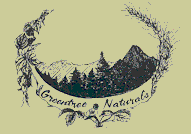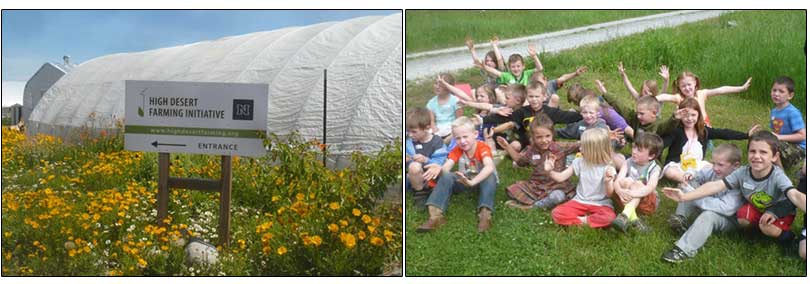 |
 |
 |
 |
 |
 |
 |
 |
 |
 |
|
Greentree Naturals Newsletter Spring into Summer 2017I was recently at a luncheon where a woman who had spent the winter in Arizona sheepishly asked me "how was your winter?" I thought about it for a brief moment and replied "Fabulous!" which was a great surprise to her. She told me that she had talked to 20+ people since she returned to the north country and every one of them had said the winter was "horrible". Yes, we had a lot of snow and ice and cold, and I loved every minute of it! I stayed on the farm and didn't venture to town for all of December AND January. I was in town only twice in February. When I've mentioned this to a couple of people, their response was "why would you do that?" and my answer is why wouldn't I? There is no place that I'd rather be than right here on the farm. Perhaps a part of the beauty of spending a good deal of the winter at home on the farm is that we don't have to go anywhere. I suppose if you had to drive to town in the snow and ice, it would be bad. At any rate, winter into spring was a positive and productive time. Staying home is total contentment! There's truly no place like home! Having the big greenhouse in full working order is a delight and such a satisfying space to spend time! In March and April, when it was cold and raining outside, the greenhouse was warm and cozy for planting seeds and transplanting. I love listening to the sound of the rain on the greenhouse rooftop. Last year was our first year using the greenhouse and I purposefully did not fill up the structure until we've worked out the kinks of growing in a greenhouse. Now, with two seasons of keeping notes and exploring different management methods, I believe we will move into a full greenhouse production next year. The space is awesome, the plants love it and thrive in the interior micro-climate. The subterranean heating/cooling system has improved since we installed higher CFM (cubic feet per minute) fans, which has improved the cycling of underground air into the structure. Early February, I sent out a plant list of what varieties we were planning on growing to customers who had expressed an interest, and ended up with pre-orders for 75% of what we grew in the greenhouse this year. Like with a CSA, I'd much rather have a good idea of what people want than hauling plants to the farmers market; loading and unloading a lot of heavy plants isn't as easy as it used to be. I'd much rather grow with specified customer needs than try to guess. We do plan on expanding production in 2018 for greenhouse plants and will host a one day plant sale. Most of what we grow comes from our own certified organic seed, so we offer something unique in that most vegetable species are already well adapted to our northern climate. I don't know of anyone else locally that is growing and selling certified organic plant starts. We feed the seedlings worm tea throughout their early weeks of growing and have found it to be the best fertilizer we could ever hope for. We're all about the worms now! Thom built another worm bin, this one made out of two 55 gallon garbage cans. We moved the 4 X 6ft worm bin out next to the compost pile and were pleased to gather about 30 gallons of worm tea which has provided food for all of the seedlings in the greenhouse throughout the first months of growing and produced healthy, vigorous seedlings. We released lady bugs for keeping the aphid infestations at bay, and aphids are pretty much a part of any greenhouse situation. Since aphids are born pregnant, they can be a problem in any growing environment. All in all, having such healthy seedlings has minimized pest infestations. The Organic Gardening Workshop series has been well attended and filled to the maximum attendees that I accept (10). I prefer keeping the sessions small enough to utilize our time together and have plenty of time for Q & A's. There is a group of four lovely women gardeners who drive two and a half hours to attend the workshops. Their enthusiasm is refreshing and they always have good questions! We have a mentorship agreement with a gentleman who lives five miles away that comes to the farm two days a week to learn the details of cultivating a small farm. Brad is a retired cardiologist from Colorado. He purchased a small farm and wants to learn how to be more sustainable in his lifestyle AND learn how to create a more sustainable small farm enterprise. He is most eager to learn and be helpful with most any project on the farm and we are happy to have an enthusiastic learner with us. The first week of June we had 29 kindergartners here on the farm to plant pumpkins. The children will return in the fall to harvest pumpkins as first graders and bring along the new kindergartner class. I'm not certain, but I think this may be year 18 or 19 of the Pumpkin Project. We've and a lot of little cookie crunchers out to plant pumpkins over the years. The third week of June, I flew to Reno, Nevada and gave a couple of presentations for the Western Nevada Specialty Crop Institute and University of Nevada. I talked about season extension, hoop houses and high tunnels and had 45 participants in my sessions. Growers in that area have high desert climate conditions, high winds, and minimal water for production and are one dedicated group of gardeners! Leaving the farm this time of year was a bit of a challenge, but they made me an offer I could not refuse! Travel and flying is not high on my list of things that I like to do anymore, but I'm glad I went and hope to have the opportunity to return to present future educational offerings. I think that's about it for our spring into summer newsletter. Visit Greentree Naturals on Facebook for regular updates of what's happening on the farm!
Hoop house in Reno, NV & Kids ready for the 2017 Pumpkin Project.
|
2003 Rapid Lightning Road, Sandpoint, Idaho 83864 • 208-263-8957 • info@greentreenaturals.com
Site Design by Logical Expressions, Inc.


